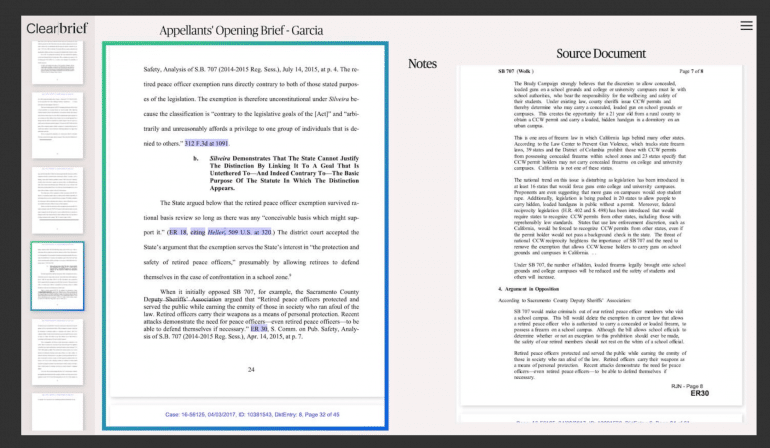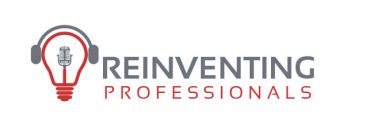For a recent Reinventing Professionals podcast, I talked with Jacqueline Schafer, the founder and CEO of Clearbrief, a platform that uses AI to improve the accuracy of legal writing by identifying how well a writer’s sentence is supported by the source document. The company launched in 2020, and this March it announced a $1.2M seed round. Here are highlights from the interview.
Ari Kaplan: Tell us about your background and the genesis of Clearbrief.
Jackie Schafer: I started out as a litigator at Paul Weiss, but spent most of my career in public service as an assistant attorney general, where I was regularly briefing and arguing cases before the state appellate courts in Alaska and Washington state. I’ve written attorney general opinions and recently wrote an academic law review article about how AI will transform government social services and court systems.
What the average person doesn’t realize about court systems is that they are not like the TV show ‘Law and Order.’ Most cases are won or lost based on the writing. Often, it comes down to what the judge is reading alone in their chambers.
I started thinking about the idea for Clearbrief a couple of years ago when I was working on my first pro bono asylum case that was incredibly stressful. My client was a pregnant woman from Honduras with a toddler. If we lost, they would be sent back to Honduras and likely murdered. It was the final hearing, and I could tell that the judge was very skeptical toward me, the case and my client. But there was a moment where I was able to point the judge to a sentence in my brief referring to a piece of evidence in the case. I saw the judge change his mind. I saw him believe my client and he granted asylum. That was probably the best day of my career. I remember thinking that it is all about the evidence. If you can show the judge where in the record you support your argument, the judge is so much more likely to agree with your theory of the case.
I started Clearbrief to help lawyers find the evidence that supports their arguments and wins the case.
How does Clearbrief work?
JS: It’s like Grammarly, but for the substance of what you’re writing about. Legal writing has really specific requirements. The gold standard of legal writing is that nearly every sentence in the brief has to have a citation, whether it’s to the evidence in the case, or to the legal precedent, statutes and regulations. We are incorporating AI to help users: 1) check their brief before filing it; 2) analyze an adversary’s brief to spot inconsistencies, highlight potential misrepresentations, and help formulate a response; and, 3) develop an outline for a hearing or deposition.

Clearbrief gives clients and judges a simple and interactive way to read your document filings and see how the evidence supports each argument.
I have found that writing a brief is a wonderful creative process when you’re brainstorming your arguments and developing your theory, but then a nightmare when cleaning up the citations, addressing the formatting, and creating a table of authorities. Clearbrief allows you to upload the documents from the record that you’re referencing in the brief, then our algorithm can indicate where the writing is not supported by the source document in a color-coded interface. Following the review process, Clearbrief supports the administrative tasks related to formatting, finalizing the document, and creating a table of authorities. It is a much more streamlined process because it is using cutting-edge technology. One can follow the local rules around e-filing, but Clearbrief also generates a link that counsel can share in the brief or via email with the judge, the court and opposing counsel. It allows them to access an interactive version of the final brief, where they can view the source evidence alongside the document. The system improves your credibility and makes it more likely that you’re going to win.
What’s the technology behind Clearbrief?
JS: We have some patent-pending technology that uses natural language processing techniques, which is a form of AI to identify patterns in the documents and statistically understand the meaning of sentences and source documents to develop relationships.
Who is your target user?
JS: The platform is designed for lawyers at firms of all sizes, as well as judges and clerks. It is meant to be a team tool because the interface indicates the source for argument and assigns a score. For example, if you are an associate at a firm writing the draft of a brief, the partner will typically want to see everything that you’ve written and double-check your work.
We are focusing on small firms at the outset because [Clearbrief] can be an equalizing factor. You can write your facts section and Clearbrief can automatically find the best source in the record to support each sentence. That amount of help for a small firm dealing with massive litigation is so important. To really be profitable, firms have to reduce the number of hours they spend on nonbillable tasks, which is what Clearbrief is handling.
How do you see this technology changing the way legal writing is taught in law schools?
JS: The best legal writing does not describe a source document beyond recognition. Instead, when a judge reviews the source after reading your sentence, the judge should recognize that the two are consistent. Clearbrief can flag those places where the writer may have taken too much liberty describing a source document. This helps students understand that accuracy is really about credibility, so you want to always be as accurate as possible when describing a source.
Ari Kaplan regularly interviews leaders in the legal industry and the broader professional services community to share perspective, highlight transformative change, and introduce new technology on his Reinventing Professionals podcast. Listen to his conversation with Jackie Schafer here.
Illustration ©iStockPhoto.com
Subscribe to Attorney at Work
Get really good ideas every day for your law practice: Subscribe to the Daily Dispatch (it’s free). Follow us on Twitter @attnyatwork.


















